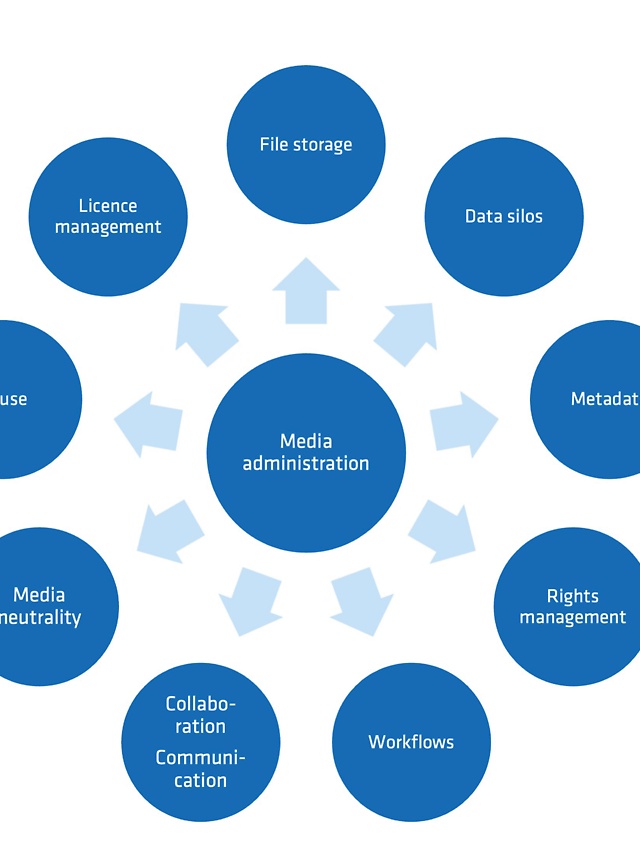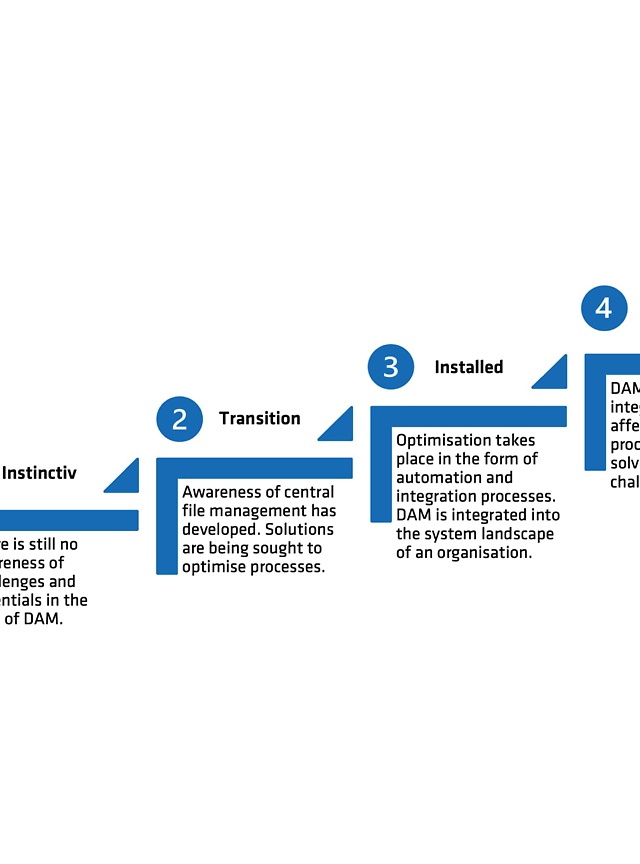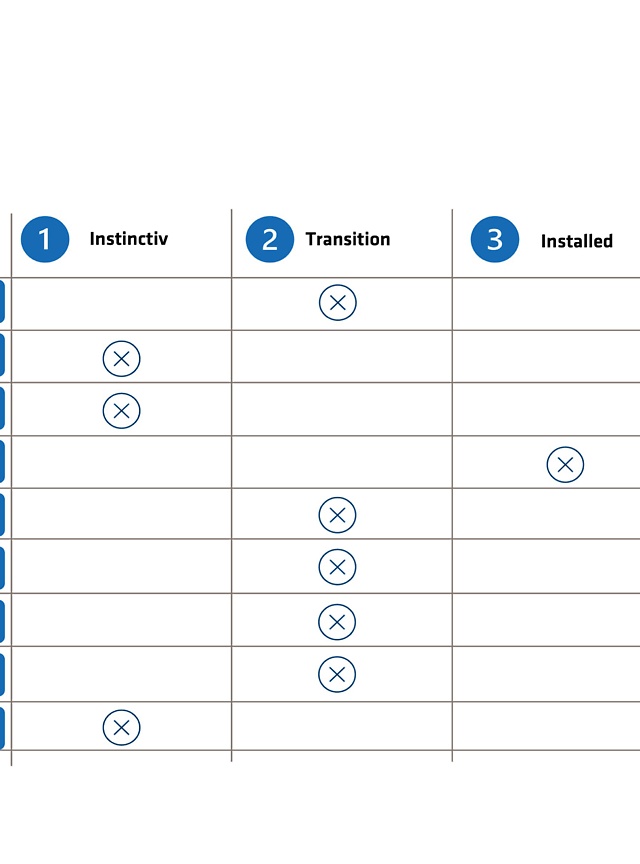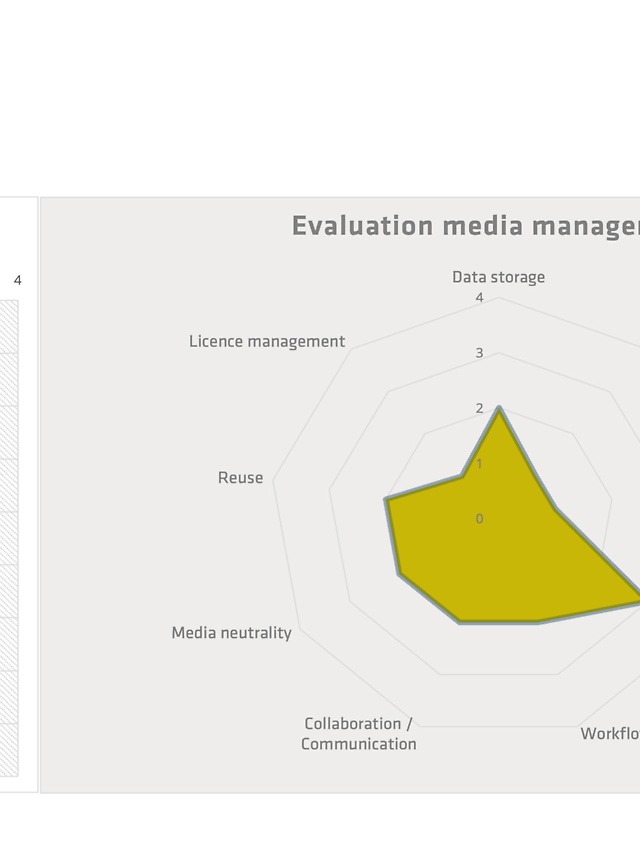9. November 2022 By Axel Ziegler
#3 – DAM Maturity Model
Having learned about the importance of digital asset management systems, the tasks they perform and the benefits they bring in the first two blog posts in this series, I would now like to use this third blog post to explain how to assess companies on how efficiently they manage their media. This assessment is used to create a foundation on which pitch-perfect consultancy can be offered to help companies in optimising their media management. After all, working with files, especially images and videos, is a daily occurrence in corporate communication. Brand and media communication should be consistent throughout the entire customer journey in particular so that customers and potential customers have an optimal customer experience at every touchpoint. Companies are trying to manage and optimise how they handle their digital media content in this regard.
First of all, a company or organisation needs to understand that digital media content or media content is more than simple files. Media content elements need to be seen as media assets and thus as value-adding elements that need to have the associated methods and processes applied to them. There are always external influences and new requirements that the organisation cannot control. This means that internal processes and workflows need to evolve in a way that means they can be adapted as needed.
The DAM Maturity Model
There are a number of different models that illustrate the best way for a company or organisation to handle its digital media content. Some of these are theoretical approaches such as the DAM Maturity Model developed by the DAM Foundation and Real Story Group or the Maturity Model for Web Content Management by Gartner.
The best-known model, namely the DAM Maturity Model, is a tool originally developed by the DAM Foundation, a not-for-profit think tank, for organisations to measures their current level of digital asset management proficiency. This tool enables companies to assess their level of expertise in different aspects of DAM operation.
The DAM Maturity Model denotes the key areas in which a successful DAM operates at an optimal level and maps these into four parent categories:
- People
- Information
- Systems
- Processes
These are in turn subdivided into 15 further aspects (dimensions).
The model also divides the competence in each category into five competency levels, increasing in sophistication and functionality, from ‘ad hoc’ to ‘optimal’. The competence reflects the level of success in the individual aspects.
The DAM Maturity Model indicates what level a company is currently at and provides guidance on how to develop a more mature DAM strategy.
Simplified DAM Maturity Model
The dimensions of the DAM Maturity Model can be broken down into just nine operational aspects and four competency levels to make it more practical to use. You can use these dimensions to ascertain a company’s DAM competence during initial acquisition or consultancy meetings and obtain an initial assessment that way.
Dimension 1: Operational aspects
You can see the operational aspects that make up the simplified model in the diagram below. You can easily ask for these in an acquisition or kick-off meeting on the use of DAM systems.

File storage
There are different ways of storing data. Having a systematic storage method lays the foundation for all further work steps that the media content goes through. The form in which a file is available largely determines if and how quickly it can be found.
This aspect first requires clarification as to whether a company stores its media files.
Data silos
Every application often manages its assets independently on its own file system. This means that when a new version of an asset is released, all the applications must be fed this file manually. By connecting the DAM system to other applications, the media content can be exchanged or referenced between the systems fully automatically. Having a single point of truth for the media content eliminates the need to manually maintain data silos.
One question that needs to be clarified in this respect is how the company handles using media content in multiple applications.
Metadata
Metadata is data that provides both a technical description of data and a description of its content. It is particularly important that a file is marked with suitable and comprehensible keywords when searching for it. This improves the findability and the usability of media files and thus has a positive impact on the return on investment (ROI) of the asset. After all, a file only becomes an asset for an organisation if it has high-quality metadata.
The following questions need to be clarified here: Is metadata stored for the media files? How is it stored?
Rights management
Many organisations also manage media that should not be accessible to everyone. When it comes to access rights management, they should follow the principle of each user having the exact rights they need to access all the media files they need to do their job. This means that the user only sees what they are allowed to see and can only perform the operations with a file that they are authorised to perform with their current status. This prevents sensitive data from being made accessible to unauthorised persons.
This requires clarifying how the company controls its access rights to media files.
Workflows
Workflows need to be identified, standardised and any automation potential they contain needs to be ascertained. Standardised and automated workflows are less prone to error than manual ones. This significantly improves the quality, keeps it at a constant high level and makes the results reproducible. Automated workflows also increase the speed at which work can be done, meaning that the results can be integrated into production more quickly.
Are there defined, documented and active work processes for media files? The initial interest here is on whether the company or organisation has these types of processes in place and how they are handled, not how they work.
Collaboration/communication
The media content creation process needs to be coordinated with a number of different participants and stakeholders, such as creative agencies, photographers, graphic designers, copywriters and employees in product management or marketing. This creative process takes time, money and resources. Coordinated communication and efficient collaboration with the various different participants in the process reduces the complexity of asset creation. Media content can thus be shared and coordinated quickly and securely with all those involved in the process.
The key question here is what tools are used to communicate between all the participants/stakeholders in media content/asset creation?
Media neutrality
Channel-based asset extraction is an essential feature of consistent brand and media communication. The assets are expected to be in certain prescribed output formats and resolutions. The aim should be to ensure that the various derivatives of a file are created in a meaningful and efficient way.
The following question must be answered here: how does the company handle providing media content in a variety of formats and resolutions for the different output channels?
Reuse
Every company makes an investment when it creates media content, which means it has a duty to get the most out of this investment. It is therefore advisable to use media files more than once. An effective strategy for reusing assets multiple times requires planning and a method to monitor them. This maximises the return on investment (ROI) for the media assets and minimises their time to market.
The following needs to be clarified: are media files used more than once? How often are they used?
Licence management
In addition to access rights, licensing and usage rights are also an essential aspect of media management. How long can an asset be used in which channel? How this important information is managed should be documented for each asset concerned, as this will remove any ambiguity as to if or where a file can be used – avoiding any costs incurred for licensing penalties.
The following questions need to be answered here: how does the company manage its media file licences? Has the company ever had to pay licensing fines?
Dimension 2: Competency of the company
The second dimension looks at how the company currently handles the operational aspects mentioned above and thus describes its competency. As the figure below shows, there are a total of four competency levels ranging from ‘instinctive’ to ‘integrated/strategic’:
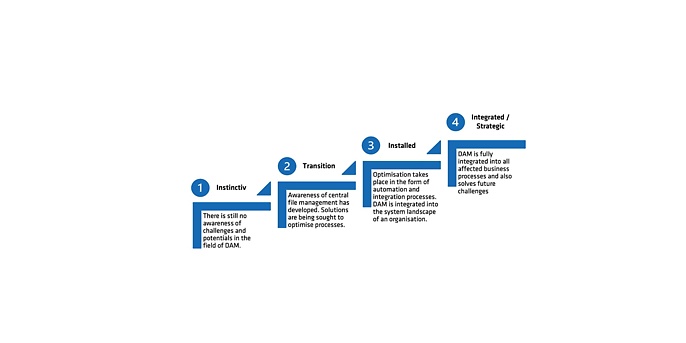
Instictive
A company that is at the ‘instinctive’ level does not yet leverage the possibilities of central media management. The reasons for this can vary. The operational aspects are handled individually and arbitrarily by the staff.
Transition
The company has typically recognised the need for action, but is not yet aware of the challenges that need to be overcome and the potential that exists. The company is thinking about which tasks and processes can be optimised. At the ‘transition’ level, individual solutions are implemented and integrated into practical everyday work. These are mostly proprietary developments that try to solve the biggest pain points in media management.
Installed
The company has already introduced central media management such as a DAM system in one or a few departments. These manage their media content independently in order to use isolated solutions for practical challenges or media organisation functions. The company is still gaining initial experience at this level and recognises the potential and challenges that using these systems present. It is seeking out and discovering solutions to the practical challenges posed by asset creation, asset management and asset distribution.
Integrated/strategic
Organisations at the ‘integrated/strategic’ level have completed a full strategic integration of a DAM system into all affected business processes. The DAM system is connected to nearly all the relevant applications that work with media files via standardised interfaces. The company executes its own systems continuously and independently or is supported by analyses performed by external experts and assessments. The processes and tools thus meet current and future requirements.
Digital asset management can only reach its full potential when it is integrated at the technical and operational levels. By being deeply rooted in the system landscape of an organisation, the planned processes and procedures can also be activated and successes can be measured.
An example assessment
You can use this simplified DAM Material Model in an acquisition meeting to determine the DAM competency of a company.
To do this, you mark the corresponding competency level for the respective operational component in a way that optimally gives you new competency values.
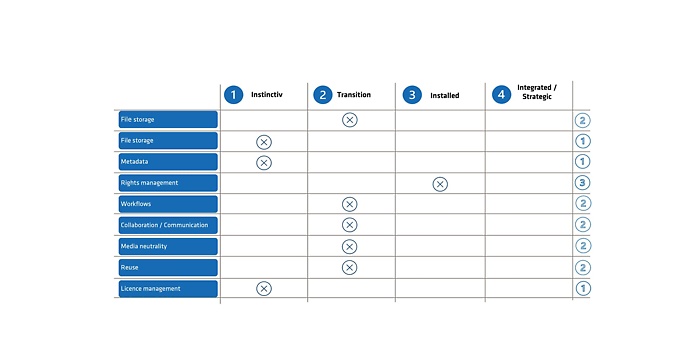
Using statistical assessments allows you to determine the minimum and maximum value as well as the empirical variance and the average value, for example. The higher the average value and the lower the variance, the more optimally and effectively the company uses a DAM system.
In the figure above, the result would be an average of 1.78 with a variance of 0.44, or in other words, a below-average, fairly evenly distributed value. This would be a fairly typical value for a company using a file server as a central media management with an AD connection that collaborates via Dropbox or Microsoft Teams.
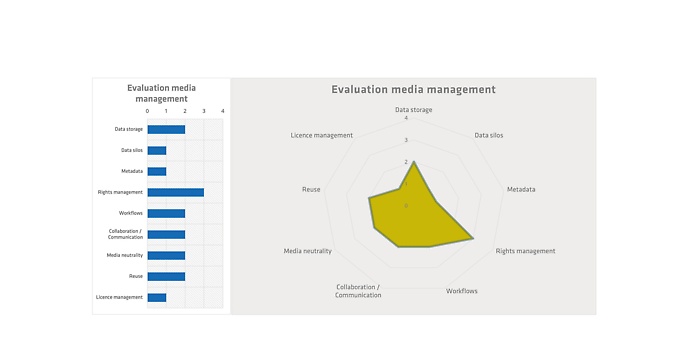
The maturity level assessment can be used as a basis to discuss the next steps for optimising media management in a company and initiate appropriate measures.
You will find more exciting topics from the adesso world in our latest blog posts.
Why not check out some of our other interesting blog posts?


